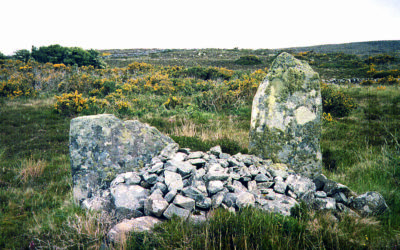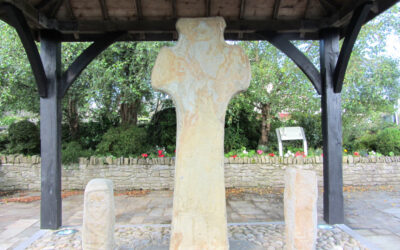
Inishowen Heritage
Inishowen Heritage Trail
Moville
Moville
Inishowen, County Donegal, Ireland
Moville is a picturesque town on the banks of Lough Foyle. It seems to have two Gaelic meanings translated as either “Bun a’ Phobail”, meaning “foot of the Foyle”,
or “Magh Bhile, meaning “plain of the ancient tree”.In 1768, Samuel Montgomery, a rich merchant who had served as Sheriff of Derry City in 1754,
bought the land where the present town lies, and built “New Park House” home to generations of the Montgomery family.
The town is still closely associated with the Montgomery family. The last resident was Lady Montgomery, who was beloved by the people of Moville.
She died in 1949. New Park House later passed on to Bishop Sir Henry Montgomery, father of Field Marshall Montgomery, better known as “Monty”.
Although he was not born there, he spent most of his school holidays in Moville. Monty became one of the most successful Generals of the Second World War,
receiving the title Viscount Montgomery of Alamein after his famous battle of the same name. In the early to mid-C19th, the town became the dominant centre for markets,
trade and milling in the east Inishowen peninsula. The port played an important role in the town up until the middle of the C20th, and has enjoyed popularity as a seaside
resort since the Victorian period. This is reflected in the architecture of the villas of Montgomery Terrace, which retain most of their original features.
Moville also has a long association with shipping along the Foyle; the first steamboat service between Derry and Moville began in 1832, and in the 1860s,
Moville developed as a regular point of departure for emigrants on the Anchor Line ships from Derry to America.
“Waddington’s guide to Derry and the Donegal Highlands” printed circa 1918: states: “No more charming voyage than that down Lough Foyle could be desired…
Moville is a prettily situated watering place, and has more than a local reputation. It is here the great American steamers plying between Glasgow and New York
call to take up or put down the Irish and English mails, which are conveyed to or from Derry by steam tender. It is here that many a migrant has his last glimpse of the old country,
and at Moville, too, many a one has set foot on the Emerald Isle for the last time.”









